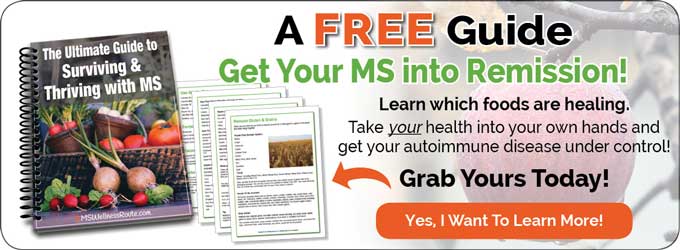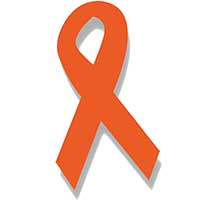Last Updated on January 27, 2025 by Cathy

Inflammation is the body’s natural defense for protecting itself. It fights off infections and produces pain to let you know something is wrong. But if you aren’t living an anti-inflammatory lifestyle inflammation can become chronic.
When the inflammation lingers for months even years, your body is always on a state of high alert. Chronic inflammation leads to many health issues. Such as heart disease, cancer, and autoimmune diseases. It destroys healthy cells in the arteries, joints, and organs.
How to Check for Inflammation
Chronic inflammation isn’t as noticeable as acute inflammation. As the body starts sending signals of inflammation most people ignore it such as a rash. Failure to eliminate chronic inflammation can lead to auto-inflammatory disorders.
According to the World Health Organization (WHO):
Chronic diseases are “the greatest threat to human health.”
Eating a nutrient-dense diet and living a healthy lifestyle can reduce your inflammation. To get an idea of how much inflammation is in your body you can get different blood tests.
C-reactive protein (CRP)
Your liver produces CRP, as the level rises it’s an indicator that inflammation is rising. The test can’t pinpoint where the inflammation is coming from. But, it lets you know if there’s a serious health issue. A CRP test is also a good indicator of bacterial and fungus infections.
CRP levels:
- Best – 1.0 milligram per liter (mg/L) or lower
- Low risk – 2.0 mg/L or lower
- High risk – above 2.0 mg/L
The image below shows my first CRP test results of 1.7 mg/L.

Homocysteine
Homocysteine is a sulfur-containing amino acid in your blood. Our bodies use homocysteine for energy production. High levels can lead to an increased risk of many different health issues.
Including:
- Brain atrophy
- Dementia
- Heart disease
- Osteoporosis
- Stroke
Homocysteine also contributes to neurodegenerative disorders like Alzheimer’s disease and MS. And to oxidative stress which damages cells and impairs your body’s ability to detoxify. A poor diet, smoking, drinking coffee contributes to higher levels of homocysteine. Aging, especially after 70, and being male also increases homocysteine levels.
If you have a mutated MTHFR gene your body will have a hard time breaking down homocysteine. The MTHFR gene helps to make an enzyme that plays a role in processing amino acids. It is the foundation of proteins. This can lead to vitamin deficiencies of vitamins B6, B12, and folate.
Homocysteine levels:
- Best – 4-6.5 micromoles per liter (µmol/L)
- Normal – 5-15 µmol/L
- Moderate – 15 to 30 µmol/L
- Intermediate – 30 to 100 µmol/L
- Severe – greater than 100 µmol/L
The ranges above are examples only, speak to your doctor for which level is right for you.
If your level is lower than 4 µmol/L it is a good indicator that you need to eat more protein. If it’s high you should take a methylation supplement to maintain healthy levels. You may need to visit a functional medicine physician to help you get your level down.
The image below shows my first homocysteine test results of 11 µmol/L.

Reducing Inflammation
To lower inflammation, stop eating foods that cause inflammation. If you eat the standard American diet you’re eating a diet that’s full of inflammation. Eating an anti-inflammatory diet could prevent the majority of today’s diseases.
There are many diets for MS but not one diet is best for everyone. Since everyone is different their diet needs to different. For example, I need to eat a low carbohydrate and low mold diet for my yeast overgrowth and mycotoxins.
An anti-inflammatory diet is mostly a plant-based diet. It is rich in vegetables, fruits, fish, nuts, seeds, and healthy fats. Choose a diet like the Paleo diet but adjust it to fit your needs. Avoid processed foods, grains, dairy, and legumes like peanuts and soy.
Foods to eat:
- Vegetables
- Fruit
- Healthy fats like avocados, coconut (milk or oil), and olive oil
- Nuts
- Seeds
- Wild-caught fish
- Grass-fed meat and organs meats
- Pasture-raised poultry and eggs
Eat a variety of foods each with lots of vegetables and fruits. Fruits and vegetables include antioxidants and phytochemicals that protect you from diseases. These antioxidants are powerful anti-inflammatories that reduce inflammation.

Dr. Terry Wahls, author of The Wahls Protocol, recommends eating nine cups of vegetables each day. Her Paleo-based diet is very helpful and has helped thousands of people around the world. She recommends eating three cups of each category:
- Leafy greens
- Brightly colored vegetables and berries
- Sulfur vegetables like asparagus, broccoli, cabbage, garlic, and onions
Blood Sugar
Eat less sugar, which includes natural sugars like fruit, honey, or maple syrup. Glucose is a measure of sugar that’s in your blood. Carbohydrates break down into sugar/glucose.
When you eat carbohydrates or sugar it raises your blood sugar also known as blood glucose. When your blood glucose level is always high it can lead to other health issues like type 2 diabetes. Sugar is highly addictive and a hard habit to break. I didn’t eat a lot of sweets but I loved eating lots of fruit and carbohydrates. I found slowly cutting back was a lot easier than trying to go “cold turkey.”
Eat More Fiber

Most people don’t eat enough fiber, they usually only eat around 15 grams of fiber each day. It’s best to eat 30 grams or more each day. Fiber helps with the digestion of carbohydrates and keeps you feeling full longer. Fiber also helps to regulate blood glucose levels.
Eating a high fiber diet helps feed the good bacteria in your gut. Researchers discovered people with MS have less good bacteria in their gut. Plus, fiber helps with constipation which is a complaint from most MS patients.
Foods high in fiber:
- Apples
- Avocados
- Brussels sprouts
- Pears
- Raspberries
- Strawberries
- Turnip greens
Quick Links To Anti-inflammatory Lifestyle tips:
Anti-Inflammatory Diet For Beginners
How To Eat An Anti-Inflammatory Diet To Stop MS
The Right Foods To Remove Chronic Inflammation
Live an Anti-inflammatory Lifestyle
Besides eating an anti-inflammatory diet you should also improve your environment. You don’t need to do everything all at once but every little bit will help reduce inflammation in your body.
- Drink filtered water
- Exercise and keep moving
- Get good quality sleep
- Learn to manage stress
- Spend time outdoors
- Use natural body care products
- Use natural household cleaning products
You can do this!

Free Wellness Library!
Subscribe for free and I’ll send you the password to my secret library filled with many printables for your wellness journey.
Want to remember this health tip? Pin it to your favorite Pinterest board!

Resources for Live An Anti-Inflammatory Lifestyle:
https://www.ncbi.nlm.nih.gov/books/NBK493173/
https://www.ncbi.nlm.nih.gov/pmc/articles/PMC2077571/
https://pubmed.ncbi.nlm.nih.gov/29055456/
https://pubmed.ncbi.nlm.nih.gov/16085680/
https://www.ncbi.nlm.nih.gov/pmc/articles/PMC5741875/
https://jamanetwork.com/journals/jamaneurology/fullarticle/777652





